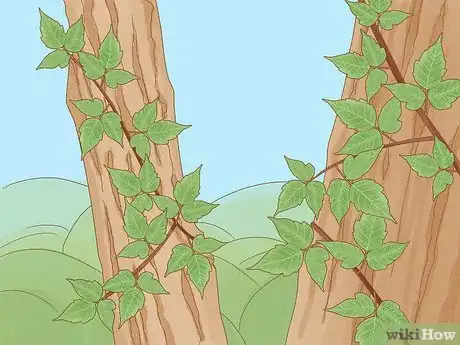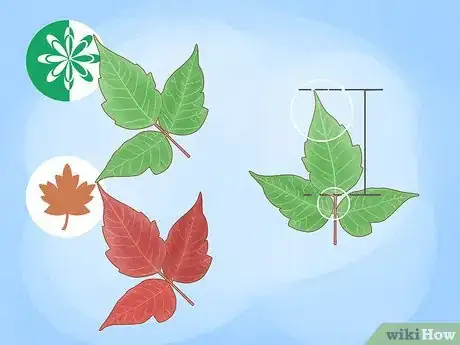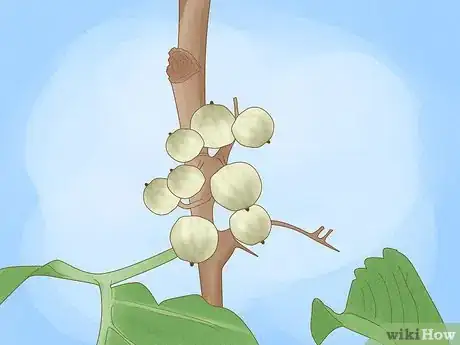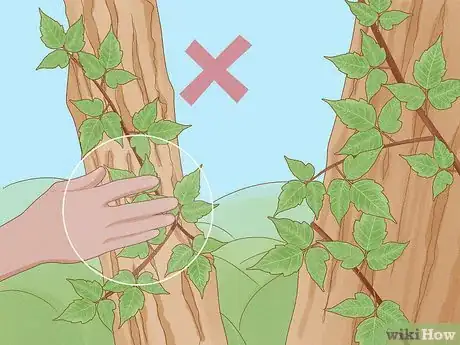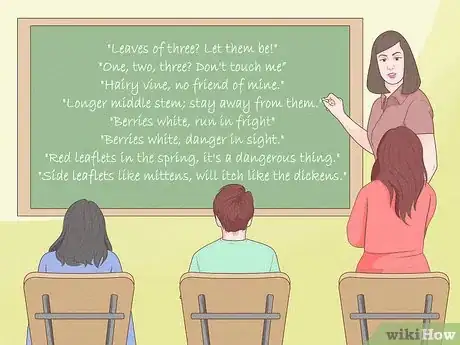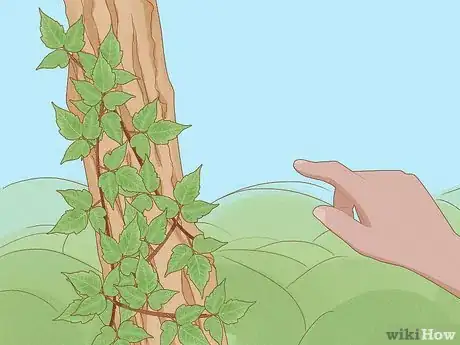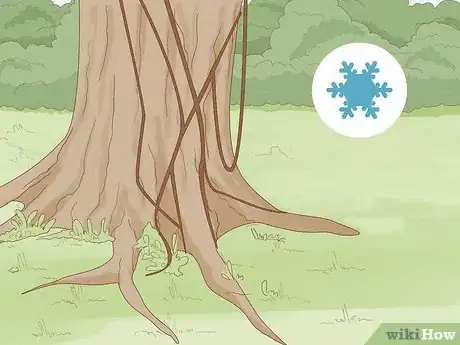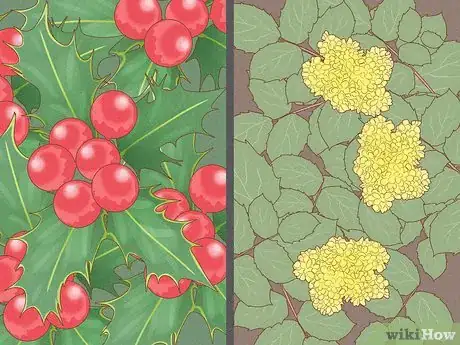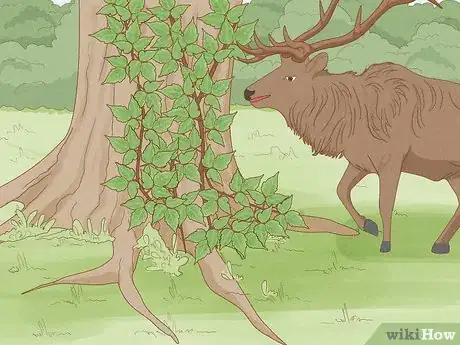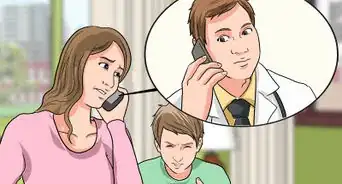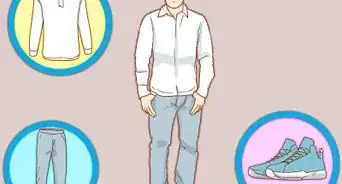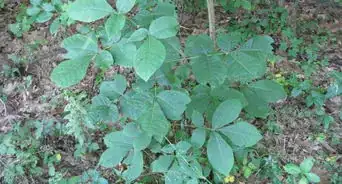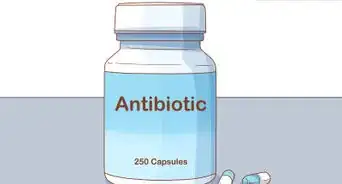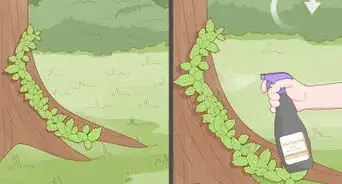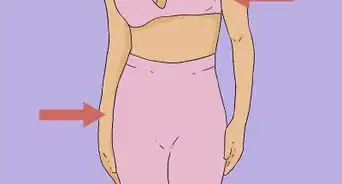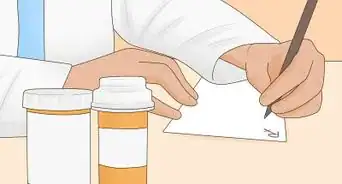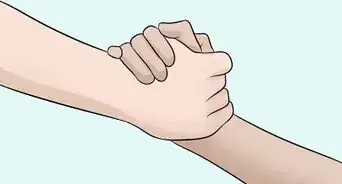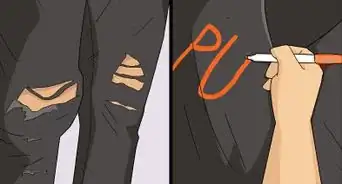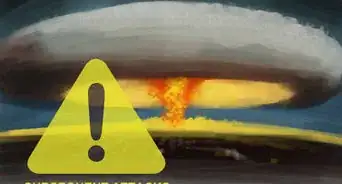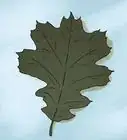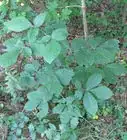This article was co-authored by Alan O. Khadavi, MD, FACAAI. Dr. Alan O. Khadavi is a Board Certified Allergist and a Pediatric Allergy Specialist based in Los Angeles, California. He holds a BS in biochemistry from the State University of New York (SUNY) at Stony Brook and an MD from the State University of New York Health Science Center at Brooklyn. Dr. Khadavi completed his pediatric residency at Schneider Children’s Hospital in New York, and then went on to complete his allergy and immunology fellowship and pediatric residency at Long Island College Hospital. He is board certified in adult and pediatric allergy/immunology. Dr. Khadavi is a Diplomate of the American Board of Allergy and Immunology, a Fellow of the American College of Allergy, Asthma & Immunology (ACAAI), and a member of the American Academy of Allergy, Asthma & Immunology (AAAAI). Dr. Khadavi's honors include Castle Connolly’s list of Top Doctors 2013-2020, and Patient Choice Awards "Most Compassionate Doctor" in 2013 & 2014.
There are 8 references cited in this article, which can be found at the bottom of the page.
wikiHow marks an article as reader-approved once it receives enough positive feedback. This article received 53 testimonials and 92% of readers who voted found it helpful, earning it our reader-approved status.
This article has been viewed 2,184,325 times.
Poison ivy is a common plant on the North American continent, noted for its ability to create an itchy rash on contact with skin. It is an extremely adaptable, persistent type of vegetation and as a result, it can be easy to accidentally become affected. Fortunately, it is not all that difficult to identify with a little practice. This article can help.
Steps
Identifying Features of the Plants
-
1Look for the vine with clusters of three leaves. Poison ivy always has clusters of three leaves. Use this as the defining characteristic, as this plant is not so obvious in most other ways. Poison ivy is remarkable with its ability to grow in a variety of ways. Although it is called "poison ivy" it can not only grow upwards clinging to surfaces like an ivy, but can also grow as a bush or single plants.
- If growing in rocky places, it tends to take over from all other vegetation. If growing near something like a tree or a fence, it will twine itself around the object as it grows, creating a dense mass of vegetation which cannot be crossed.
-
2Recognize more of poison ivy’s identifying features. Beyond clusters of 3 leaves, there are several other identifying features of poison ivy. They include:
- Pointy tips: The three closely-connected leaflets should all have pointy tips
- Bigger middle leaf: The 2 lateral (side) leaflets are smaller than the terminal (end or middle) leaf.
- Stem vs. no stem: The center leaf almost always has a small stem, whereas the 2 side leaflets grow directly from the vine and don’t have small stems.
- Waxy on top, fuzzy on bottom: The leaves can appear in a variety of shades of green, but they tend to be a darker, waxy green on top. The underside of the leaves typically looks lighter in color and fuzzier.
- Seasonal color changes: In the spring, the leaves are usually a bright green color, whereas in the fall, they turn red (poison ivy) or bright red/orange (poison oak)[1]
- Sometimes shiny: The leaves will often have a shiny appearance to them, but don’t rely on shininess alone as an indicator -- especially if it has rained recently.
Advertisement -
3Check for fruit. Both poison ivy and poison oak plants produce small clusters of fruit.[2] If either plant has berries, do not touch or consume them for any reason.
-
4Don’t touch any part of the plant. All parts of the plant contain the irritating urushiol oil, so avoid any contact with all parts of the plant. Urushiol is a colorless (or sometimes slightly yellow) oil that can remain on objects for months.[5]
- The oil content is highest on the plants in the spring and summer months.
- If you accidentally touch poison ivy, you'll get a rash with patches or streaks of red, raised blisters on your skin. If that happens, use a steroid cream and calamine lotion. You can also take an oral antihistamine for the itching.[6]
-
5Teach children rhyming phrases to help them avoid poison ivy. There are a number of fun, rhyming catch-phrases that you can teach to children to help them identify and stay away from poison ivy. Here are some of them:
Poison Ivy Rhymes for Kids
"Leaves of three? Let them be!"
"One, two, three? Don't touch me”
"Hairy vine, no friend of mine."
"Longer middle stem; stay away from them."
"Berries white, run in fright"
"Berries white, danger in sight."
"Red leaflets in the spring, it's a dangerous thing."
"Side leaflets like mittens, will itch like the dickens."
Spotting Poison Ivy and Oak When Out and About
-
1Inspect vines before touching, brushing against them or walking through them. When growing as a vine, poison ivy can snake its way along trees.[7] When it grows like this, it is tons of little poison ivy plants growing out of a vine. Always inspect a vine if you need to go near it, and see if it has plants growing out of it.
-
2Remain vigilant even during the winter months. Poison oak drops its leaves in winter, leaving a bare stem of a vine hanging down. But for sensitive individuals, this can still cause a rash.
Tricky Things to Be Aware Of
-
1Avoid confusing poison oak with other plants. Some other plants have two or three similar-looking leaves. Such other plants may have spines on the leaf tips (holly or Mahonia) or thorns on the stems (blackberry). However, it is better to avoid plants that resemble poison ivy.[8]
- If you see a plant that has all the characteristics, but have regular, uniformly shaped leaves, or sharp tips on the edges, it's not likely to be poison ivy. Poison ivy has tips that are more randomly spaced and somewhat curved between the tips along the edges.
-
2Even if other animals eat an unidentified plant, that does not mean it is safe. Toxic plants are not poisonous to all creatures. Deer and other grazing animals may happily eat poison ivy.
Community Q&A
Did you know you can get answers researched by wikiHow Staff?
Unlock staff-researched answers by supporting wikiHow
-
QuestionWhat is the best way to get rid of poison ivy?
 wikiHow Staff EditorThis answer was written by one of our trained team of researchers who validated it for accuracy and comprehensiveness.
wikiHow Staff EditorThis answer was written by one of our trained team of researchers who validated it for accuracy and comprehensiveness.
Staff Answer wikiHow Staff EditorStaff AnswerThe best way to get rid of poison ivy is to simply dig it up and dispose of it, though you should be extremely careful that you do not come into contact with the plant or anything the plant has touched, especially if you are sensitive. A safer option is to use a spray-on herbicide, a natural option is St Gabriel Labs' Poison Ivy Defoliant®, but a glyphosphate-based herbicide like Roundup™ will also be effective. Observe the area and take care of any that tries to grow back.
wikiHow Staff EditorStaff AnswerThe best way to get rid of poison ivy is to simply dig it up and dispose of it, though you should be extremely careful that you do not come into contact with the plant or anything the plant has touched, especially if you are sensitive. A safer option is to use a spray-on herbicide, a natural option is St Gabriel Labs' Poison Ivy Defoliant®, but a glyphosphate-based herbicide like Roundup™ will also be effective. Observe the area and take care of any that tries to grow back. -
QuestionWhat does it look like when you get poison ivy?
 wikiHow Staff EditorThis answer was written by one of our trained team of researchers who validated it for accuracy and comprehensiveness.
wikiHow Staff EditorThis answer was written by one of our trained team of researchers who validated it for accuracy and comprehensiveness.
Staff Answer wikiHow Staff EditorStaff Answer
wikiHow Staff EditorStaff Answer -
QuestionWhat kills poison ivy naturally?
 wikiHow Staff EditorThis answer was written by one of our trained team of researchers who validated it for accuracy and comprehensiveness.
wikiHow Staff EditorThis answer was written by one of our trained team of researchers who validated it for accuracy and comprehensiveness.
Staff Answer wikiHow Staff EditorStaff AnswerYou've got several options to kill poison ivy naturally, but the most effective methods involve digging it up. If you do decide to dig it up, you should exercise extreme caution so that you do not come into contact with the plant or anything the plant has touched.
wikiHow Staff EditorStaff AnswerYou've got several options to kill poison ivy naturally, but the most effective methods involve digging it up. If you do decide to dig it up, you should exercise extreme caution so that you do not come into contact with the plant or anything the plant has touched.
Warnings
- Never burn poison ivy as a method to get rid of it. The oil on the leaves will burn, and if you breathe in the fumes, chances are you'll get it in your throat or lungs, which will make breathing extremely painful. It can be damaging or even lethal.⧼thumbs_response⧽
- Poison ivy can be embedded in the Virginia creeper, so never just go rolling around in the Virginia creeper, or there might still be serious consequences. And be aware that it's easy to confuse poison ivy with the Virginia creeper. Even though the Virginia creeper has five leaves, it's still easily mistaken for poison ivy (or vice versa).⧼thumbs_response⧽
Things You'll Need
- Photos or images to carry with you to aid identification––use your smartphone or similar device for easy photo retrieval
- First aid treatments for poison plant rashes especially when walking in nature, hiking or camping
- Degreaser, such as dish-washing detergent not diluted, or a specialized soap for poison plants (not ordinary soap)
References
- ↑ https://extension.umd.edu/resource/poison-ivy
- ↑ https://extension.umd.edu/resource/poison-ivy
- ↑ https://wyeastblog.org/2012/05/28/10-common-poison-oak-myths/
- ↑ http://msue.anr.msu.edu/news/identifying_poison_ivy_isnt_always_easy_to_do
- ↑ https://hgic.clemson.edu/factsheet/poison-ivy/
- ↑ Alan O. Khadavi, MD, FACAAI. Board Certified Allergist. Expert Interview. 29 July 2020.
- ↑ https://extension.umd.edu/resource/poison-ivy
- ↑ https://extension.okstate.edu/fact-sheets/poison-ivy-poison-oak-and-similar-plant-identification.html
- Paul Tawrell, Camping and Wilderness Survival, p. 71, (2006), ISBN 0-9740820-2-3 research source
- Lynn Brunelle, Camp Out!, p. 237, (2007), ISBN 978-0-7611-4122-8 – research source
About This Article
To identify poison ivy, check to see if the plant you're looking at has clusters of 3 leaves, which is a defining characteristic of poison ivy. You can also look for white, translucent fruit on the plant, which is another sign that you're looking at poison ivy. If you're still not sure, carefully observe the stems the leaf clusters are attached to. If the center leaf is attached to a long stem that the 2 side leaves branch off of, you're probably looking at poison ivy. To learn how to tell the difference between poison ivy and poison oak, keep reading!
